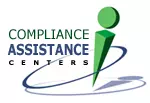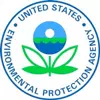Managing Hazardous Materials
|
Please note that this page refers to federal requirements. State and local regulations may differ. Check the page for your state on the HERC Occupational Safety and Health Resource Locator for links to more information. |
 The rules that apply to managing hazardous materials inside
your facility are mainly concerned with protecting employees who need to work
with the materials, as well as patients and visitors who could be affected
by the materials. The general framework for the rules is largely established
by the Occupational Safety and Health Administration
(OSHA), the federal agency concerned with worker safety.
The rules that apply to managing hazardous materials inside
your facility are mainly concerned with protecting employees who need to work
with the materials, as well as patients and visitors who could be affected
by the materials. The general framework for the rules is largely established
by the Occupational Safety and Health Administration
(OSHA), the federal agency concerned with worker safety.
Once materials have been used, they may fall into the "hazardous waste" category and must then comply with another set of rules (RCRA), established by a different federal agency, the Environmental Protection Agency (EPA). See the HERC Hazardous Materials -- Overview and Hazardous Waste Determination pages for more information on hazardous wastes.
This section contains information on the OSHA Hazard Communication Standard (HazCom) and key hazardous materials topics that can help achieve compliance and reduce waste generation and operating costs. Complying with the HazCom is both a legal requirement and good common sense. Good communications, together with good workplace practices should help to reduce the incidence of illness and injuries from chemical sources.
![]() Compliance
and pollution prevention does not have to translate to higher operating costs. By
implementing good operating practices, reducing materials
generation at the source or recycling wastes health care facilities can improve
safety, reduce the volume of hazardous materials present, reduce the volume
of hazardous waste generated, lower operating costs and liabilities
associated with hazardous material management and waste disposal. The Hazardous
Chemical Minimization section provides a wide variety of programs aand suggestions
on reducing your chemical use and waste.
Compliance
and pollution prevention does not have to translate to higher operating costs. By
implementing good operating practices, reducing materials
generation at the source or recycling wastes health care facilities can improve
safety, reduce the volume of hazardous materials present, reduce the volume
of hazardous waste generated, lower operating costs and liabilities
associated with hazardous material management and waste disposal. The Hazardous
Chemical Minimization section provides a wide variety of programs aand suggestions
on reducing your chemical use and waste.
- Hazard Communication Standard
- Written Hazard Communication Program
- Identifying Responsible Staff
- Hazard Inventory
- MSDS Collection and Availability
- Labeling
- Training
- Personnel Protective Equipment (PPE)
- Spills
- Management Practices



